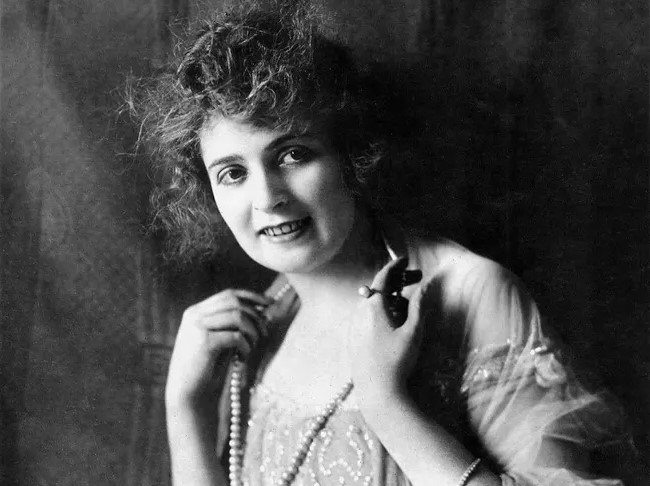In the annals of Hollywood’s early days, few names evoke as much nostalgia and reverence as that of Myrtle Gonzalez. A pioneering actress of the silent film era, Gonzalez captivated audiences with her talent and charisma. However, her promising career was cut short by a tragic event that reverberated far beyond the confines of the silver screen. In this article, we delve into the life and legacy of Myrtle Gonzalez, focusing particularly on the circumstances surrounding her untimely demise from the Spanish flu in 1918.
Myrtle Gonzalez: A Trailblazing Actress
Myrtle Gonzalez emerged as a luminary in the burgeoning world of cinema during the early 20th century. Born on September 28, 1891, in Los Angeles, California, she was destined for stardom from a young age. With her striking looks and innate talent, Gonzalez quickly rose through the ranks of the film industry, establishing herself as one of its brightest stars.
Gonzalez’s career flourished in the silent film era, a time marked by innovation and experimentation in filmmaking. She graced the screen with her presence in numerous productions, enchanting audiences with her performances. From romantic dramas to adventurous comedies, Gonzalez showcased her versatility as an actress, earning praise and adoration from critics and fans alike.
Among her most notable roles was her portrayal of the titular character in “The Blonde Vampire” (1916), a film that solidified her status as a leading lady in Hollywood. Her ethereal beauty and captivating screen presence endeared her to audiences, making her a beloved figure in the world of cinema.
The Spanish Flu Pandemic
As Gonzalez’s star continued to rise, the world was grappling with a devastating public health crisis: the Spanish flu pandemic of 1918. Originating in the trenches of World War I, the virus quickly spread across the globe, infecting millions and claiming countless lives. Its impact was felt far and wide, disrupting daily life and leaving a trail of devastation in its wake.
The Spanish flu pandemic was characterized by its swift and indiscriminate nature, targeting individuals of all ages and backgrounds. Despite efforts to contain the virus, medical authorities struggled to cope with the sheer scale of the outbreak. Hospitals overflowed with patients, and makeshift clinics were established to accommodate the influx of the sick and dying.
Myrtle Gonzalez’s Demise
Tragically, Myrtle Gonzalez fell victim to the Spanish flu pandemic, succumbing to the virus at the tender age of 27. The news of her death sent shockwaves throughout the entertainment industry, leaving her colleagues and fans grief-stricken. Her passing served as a stark reminder of the virus’s relentless grip on society, claiming lives with alarming speed and efficiency.
In the autumn of 1918, as the pandemic reached its peak, Gonzalez’s health began to deteriorate rapidly. Despite receiving medical attention, her condition worsened, and she eventually passed away on October 22, 1918. Her death was mourned by all who knew her, leaving behind a void that could never be filled.
Impact on the Film Industry
The loss of Myrtle Gonzalez reverberated throughout the film industry, casting a shadow over Hollywood’s glittering facade. Productions were halted, and projects were postponed as the industry grappled with the aftermath of her untimely death. Directors and producers mourned the loss of a talented actress whose potential had only begun to be realized.
In the years following Gonzalez’s passing, Hollywood underwent a period of introspection and change. The Spanish flu pandemic forced the industry to confront its vulnerabilities and shortcomings, prompting reforms aimed at safeguarding the health and well-being of its workforce. Gonzalez’s death served as a catalyst for change, inspiring efforts to improve working conditions and prioritize the safety of those involved in filmmaking.
Legacy of Myrtle Gonzalez
Though gone too soon, Myrtle Gonzalez’s legacy endures, a testament to her enduring impact on the world of cinema. Her contributions to the silent film era remain celebrated to this day, immortalized in the reels of celluloid that continue to captivate audiences around the world.
In the decades since her passing, Gonzalez’s influence has only grown, inspiring future generations of filmmakers and actors to pursue their dreams with passion and determination. Her name may have faded from the headlines, but her spirit lives on in the hearts of those who cherish the golden age of Hollywood.
Lessons Learned from History
The story of Myrtle Gonzalez serves as a poignant reminder of the fragility of life and the unpredictability of fate. Her untimely death underscores the importance of vigilance and preparedness in the face of public health crises. While the Spanish flu pandemic may be a relic of the past, its lessons remain relevant in today’s world, where new challenges continue to emerge.
As we reflect on Gonzalez’s life and legacy, let us not forget the sacrifices made by those who came before us. Their courage and resilience in the face of adversity serve as a beacon of hope for future generations, inspiring us to confront the challenges of our time with fortitude and grace.
Remembering Myrtle Gonzalez
In honoring the memory of Myrtle Gonzalez, we pay tribute not only to a talented actress but also to a remarkable woman whose light continues to shine brightly in the annals of history. Let us remember her not for the tragedy of her death, but for the beauty and brilliance of her life.
As we celebrate Gonzalez’s legacy, let us also reaffirm our commitment to preserving the rich tapestry of cinematic history for generations to come. Through her films and her story, Myrtle Gonzalez lives on, a timeless icon of grace, talent, and resilience.








